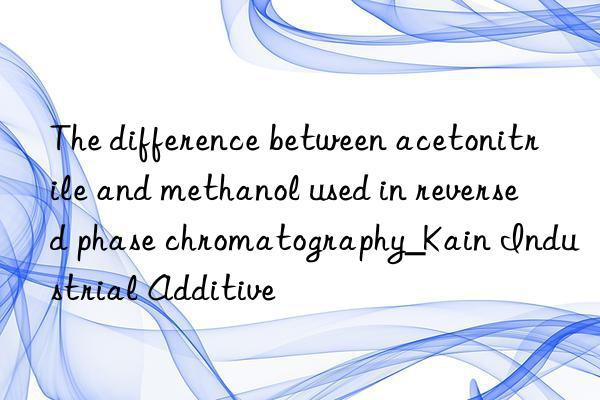
1, absorbance.
Acetonitrile HPLC grade small. Among the absorption spectra of commercially available HPLC grades and premium grades of acetonitrile and methanol, acetonitrile HPLC has the smallest absorption (especially at short wavelengths). The so-called HPLC grade removes UV-absorbing impurities and limits the absorbance to within the specified value at a specified wavelength. During UV detection, the noise generated is small, so acetonitrile HPLC grade is most suitable for high-sensitivity analysis at short UV wavelengths. In addition, acetonitrile HPLC grade produces fewer ghost peaks on the gradient baseline in UV detection. Although there are various other organic solvents with high miscibility with water, it is difficult to find smaller absorption than acetonitrile HPLC grade. In addition, although the spectra obtained between the HPLC grade and superior grade of methanol are not much different, the superior grade cannot guarantee the absorbance and may cause deviation, and the price is not much different, so try to use HPLC grade.
2. Pressure.
Acetonitrile is low, and the pressure within the column varies according to the type of organic solvent or the mixing ratio. In the relationship between the ratio of water/acetonitrile and water/methanol mixtures and the infusion pressure, when methanol is mixed with water, the pressure increases, while acetonitrile Also mixes with water and does not. Therefore, acetonitrile does not add excess pressure to the column at the same flow rate.
3. Elution ability.
Generally speaking, acetonitrile is stronger than . When acetonitrile and methanol are mixed with water at the same ratio, generally acetonitrile has a strong elution ability. Especially when the mixing ratio is low, in order to obtain the same retention time from the elution point of caffeine and phenol, the ratio of acetonitrile only needs to be less than half of the ratio of methanol. On the other hand, when the organic solvent is 100% or very close to this, methanol often has a strong elution ability from the perspective of carotene and cholesterol. When the mixing ratio is special, such as 50:1, the modulation error will be large, affecting the retention time, or the equilibrium time will be long. When acetonitrile encounters this situation, use a 10:1 mixture of methanol instead of acetonitrile, which is more convenient to operate. When the solvent is affected by temperature, container quantification is not used, but the weight method (considering specific gravity) can be used to reduce the error in the mixing ratio.
4. Selectivity of separation (elution).
The difference between the two is that acetonitrile and methanol have different separation selectivities. This is due to the different chemical properties of organic solvent molecules (methanol and ethanol are protic, acetonitrile and tetrahydrofuran are aprotic). Therefore, if the selectivity of separation cannot be obtained with acetonitrile, try methanol.
5. Peak shape
There is a difference in usage time. For example, salicylic acid compounds (phenol compounds having a carboxyl group or a methoxy group at the ortho position) have a large tail when acetonitriles are used, but can be suppressed by methanols. However, in general, polymer-based reversed-phase columns tend to have wider peak shapes than silica gel columns. This is especially common when polystyrene columns are used to analyze aromatic compounds, etc. This is very noticeable when the mobile phase is methanol, but not when using acetonitrile. For this reason, it is recommended to use the latter (acetonitrile) when using a polymer-based reversed-phase column, because acetonitrile makes the gel swell.
6. Degassing of mobile phase
For acetonitrile, please note that the preparation of the mixed solvent is not mentioned in the LC device, but only in advance in the mobile phase bottle (equal concentration system). Methanol generates heat when mixed with water, and excess dissolved air can easily turn into bubbles (degassing is easy). Acetonitrile cools by absorbing heat and produces bubbles as it slowly returns to room temperature, so degassing (heating and stirring, membrane filtration, He degassing, etc.) must be considered.
The commonly used mobile phases of reversed-phase chromatography are acetonitrile and methanol. Roughly speaking, it is best to use acetonitrile HPLC grade, but acetonitrile HPLC is much more expensive than methanol HPLC. At the same time, methanol HPLC can be used when selectivity and peak shape are poor, but it is also necessary to design analysis conditions according to various properties.
For more information, please visit: https://www.chemicalbook.com/ProductChemicalPropertiesCB2127174.htm



 微信扫一扫打赏
微信扫一扫打赏
